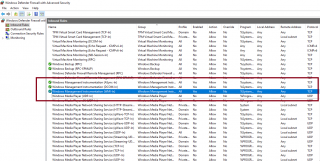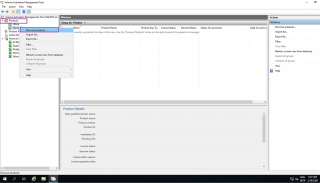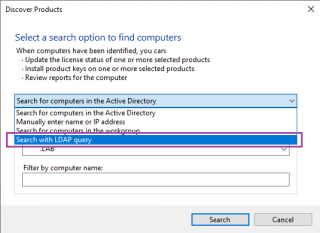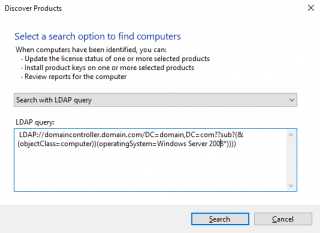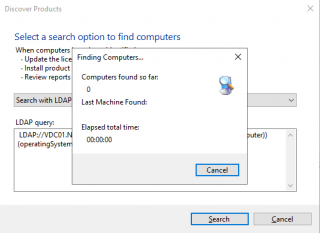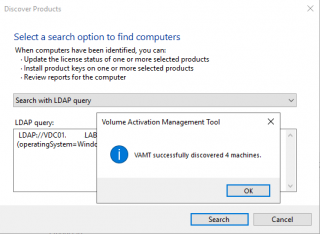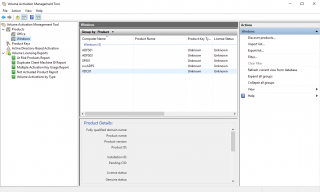Hello World,
In this part, we will finally start to work and use the VAMT Tool. In the previous posts, we have basically deployed required patches to machines that would need to obtain the ESU support. After deploying them, we have deployed and installed on our network the VAMT server that will provide a central point of management for ESU MAK Keys. Using VAMT, you will be able to deploy, install and activate your MAK Key through the network.
The VAMT tool can perform a scan of your network and retrieve the number of Windows 7 or Windows 2008/R2 computers still present within your organization. Based on this scan, you will have enough information about how many machines (and if they are really needed as well). Based on this initial inventory, you will be able to order the necessary number of ESU MAK Key for your network.
To obtain more information and follow up this series about ESU Program, please read the previous parts at
So, let’s proceed and see how to use the VAMT tool….
Discovering Products
In this post, we will use the VAMT To scan our network in order to identify legacy operating system that would need to benefit from ESU Program. VAMT Tool allows you to discover products distributed through your network and retrieve their licensing status. Obviously, before being able to retrieve the information, you would need to ensure that requirements are met. If you have strict firewall rules, you might need to update your rules in order to allow communication between legacy computers and VAMT Server…
Windows Firewall prerequistes
If you are using Window Firewall software to protect connection to the local host, you will need to ensure that the following ports are open between VAMT server and protected computers. Open the Windows Firewall with Advanced Security MMC and ensure that the following Inbound rules are enabled on the legacy computers and for the applicable Network Profile (Domain, Public, Private):.
-
- Windows Management Instrumentation (ASync-In)
- Windows Management Instrumentation (DCOM-In)
- Windows Management Instrumentation (WMI-In)
Click on Picture for Better Resolution
Obviously, if you have multiple machines that needs to be configured, you can use the GPO option where you can centrally distribute these changes to the target machines. If you are not using Windows Firewall software, you might need to coordinate with the owner of the non-microsoft firewall product used in your organization and ensure that rules or policy would allow communication between VAMT and legacy operating system (at minimum) or through your network if you want to start using VAMT tool as licensing information tool as well.
Discovering Products
Let’s assume that firewall and networking wise everything is ok, it’s time to fire up your VAMT Tool and start checking what’s present on your network. When the VAMT Tool is open, browse to the nodes Root>Products > Windows and right-click on it. In the contextual menu, select the option Discover Products
Click on Picture for Better Resolution
The following dialog box will be presented to you. To discover your products, you have multiple options. You can search in Active Directory, in a workgroup, add information manually or perform the LDAP Query.
Click on Picture for Better Resolution
Based on your infrastructure, you will need to select the most appropriate option. The most flexible option (for us at least!) is the LDAP Query option because we can create a specific LDAP query that would identify all the Windows 7 or Windows 2008/R2 Products.
Click on Picture for Better Resolution
If you use the LDAP query option, you will need to use the following specific syntax to identify the Windows 2008/R2 Server. The command line below provides you an example on how to retrieve Windows server computers
LDAP://DCOO.C-NERGY.LAB/DC=C-NERGY,DC=LAB??sub?(&(objectClass=computer)(OperatingSystem=Windows Server 2008*))
When you have entered you specific LDAP Query, you can press the search button…If the syntax is correct, you will see that that a scan of the network is ongoing…wait for completion
Click on Picture for Better Resolution
At the end, you will see a summary about how many machines have been detected and they will be added into the VAMT Console
Click on Picture for Better Resolution
When you have completed your search, you will see your legacy operating system in your console
Click on Picture for Better Resolution
Based on this information, and probably after ensuring that these machines are indeed needed and in used, you will be able to order your ESU MAK Key based on the number of machines detected and based on the licensing conditions.
Final Notes
This is it for this part ! At this stage, we have everything in place and we should be ready to install product keys, deploy them to target legacy machines and activate them. These actions are basically the last actions needed to be performed in order to benefit from ESU program. All these operations and actions will be explained in the next part of the series….
So, be patient and stay tuned
Till next time
See ya

